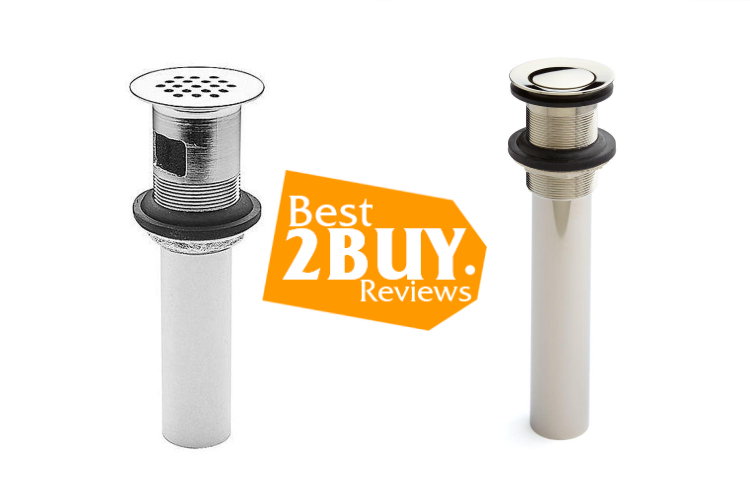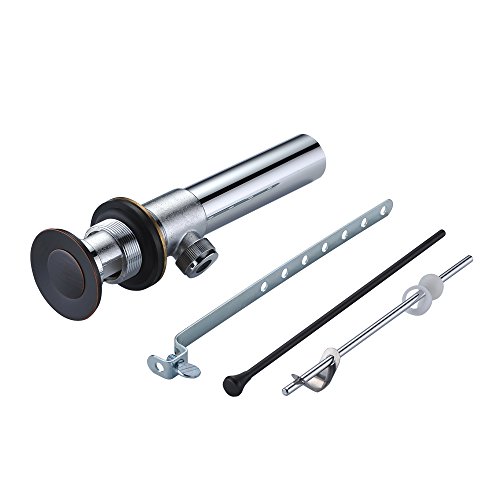How to Choose the Bathroom Sink Drains
A Comprehensive Guide to Bathroom Sink Drains

- 1. A Comprehensive Guide to Bathroom Sink Drains
- 1.1. Types of Bathroom Sink Drains
- 1.1.1. Pop-Up Drains
- 1.1.2. Grid Drains
- 1.1.3. Push Button Drains
- 1.1.4. Toe-Touch Drains
- 1.1.5. Touch-Activated Drains
- 1.1.6. Vessel Sink Drains
- 1.2. Choosing The Right Bathroom Sink Drain
- 1.2.1. Type of Sink
- 1.2.2. Material
- 1.2.3. Finish
- 1.2.4. Ease of Cleaning
- 1.2.5. Installation
- 1.2.6. Overflow or No Overflow
- 1.3. Installation Process
- 1.4. Maintenance Tips
- 1.5. Troubleshooting Common Issues
- 1.5.1. Slow Draining
- 1.5.2. Foul Odors
- 1.5.3. Leaks
- 1.6. Conclusion
- 1.1. Types of Bathroom Sink Drains
The functionality and hygiene of a bathroom are significantly influenced by the proper operation of the drains in the bathroom sink. Whether you are in the process of renovating your bathroom or addressing issues with a problematic drain, it is crucial to have a solid understanding of the intricacies of sink drains. This all-encompassing guide is designed to provide you with comprehensive information on bathroom sink drains, encompassing aspects such as installation, maintenance, and troubleshooting tips.
Types of Bathroom Sink Drains
Pop-Up Drains
One of the most common types of bathroom sink drains is the pop-up drain. Recognizable by its stopper that can be pushed down or pulled up to open and close the drain, pop-up drains are user-friendly and easy to operate. These drains often come with an overflow feature, preventing water from spilling over in case of accidental overflows.
Grid Drains
Grid drains, also known as strainer or grid strainer drains, are characterized by a flat or slightly concave metal grid that sits flush with the sink surface. These drains allow water to flow through while capturing debris, preventing clogs. Grid drains are both functional and visually appealing, providing a modern and minimalist look to the bathroom.
Push Button Drains
Similar to pop-up drains, push-button drains feature a stopper that can be activated by pressing a button on top of the drain. These drains are convenient and straightforward, offering a contemporary appearance. They are often chosen for their sleek design and ease of use.
Toe-Touch Drains
Toe-touch drains are operated by pushing down on the drain with your toe to open or close it. This hands-free operation is particularly convenient for maintaining hygiene in the bathroom. Toe-touch drains are a popular choice for those seeking a clean and seamless look in their sink design.
Touch-Activated Drains
For a touch of modern technology in the bathroom, touch-activated drains are an innovative option. These drains feature a sensor that opens or closes the drain with a simple touch. Touch-activated drains not only add a contemporary flair to the bathroom but also enhance convenience and hygiene.
Vessel Sink Drains
Vessel sinks, which sit above the countertop, often require special drains designed to accommodate their unique structure. Vessel sink drains typically have a longer neck to reach the higher basin and may feature an extended flange for proper sealing.
Choosing The Right Bathroom Sink Drain
Choosing the right bathroom sink drain is an important aspect of designing or renovating a bathroom. Here are some factors to consider when making your selection:
Type of Sink
Different sinks require different types of drains. For example, vessel sinks typically need a pop-up drain, while undermount and drop-in sinks may use different types of drains. Ensure that the drain you choose is compatible with the type of sink you have or plan to install.
Material
Sink drains are available in various materials, including brass, stainless steel, plastic, and bronze. Each material has its own set of advantages and disadvantages. Brass and stainless steel are known for their durability, while plastic may be more budget-friendly. Consider the aesthetics of your bathroom and your budget when choosing the material.
Finish
The finish of the drain can significantly impact the overall look of your bathroom. Common finishes include chrome, brushed nickel, oil-rubbed bronze, and polished brass. Choose a finish that complements your bathroom's style and other fixtures.
Ease of Cleaning
Bathroom sinks can accumulate soap scum, toothpaste, and other debris over time. Opt for a drain design that is easy to clean. Pop-up drains, for instance, can be removed for thorough cleaning, preventing clogs and maintaining optimal drainage.
Installation
Consider the ease of installation, especially if you're planning a DIY project. Some drains may require professional installation, while others are designed for simple and quick installation without the need for specialized tools. Always follow the manufacturer's instructions for proper installation.
Overflow or No Overflow
Some sinks come with overflow holes, which prevent water from overflowing if the faucet is left on. Choose a drain that is compatible with the presence or absence of an overflow in your sink.
Installation Process
- Gather Tools and Materials: Before beginning, ensure you have the necessary tools, including a wrench, pliers, plumber's putty, and a screwdriver.
- Remove Old Drain: Loosen the slip nut connecting the P-trap to the drainpipe and remove the old drain assembly.
- Apply Plumber's Putty: Roll plumber's putty into a rope and apply it around the flange of the new drain. Insert the drain into the sink and tighten the nut from underneath.
- Connect the P-Trap: Reattach the P-trap to the drainpipe and tighten the slip nut.
- Test for Leaks: Run water to ensure there are no leaks. Tighten connections if necessary.
Maintenance Tips
- Regular Cleaning: Prevent clogs by cleaning the drain regularly. Remove hair, soap scum, and debris using a drain snake or a mixture of baking soda and vinegar.
- Avoid Harsh Chemicals: Chemical drain cleaners can damage pipes and fixtures. Opt for natural solutions or mechanical means for cleaning.
- Inspect for Leaks: Periodically check for leaks around the drain and P-trap. Address any issues promptly to prevent water damage.
Troubleshooting Common Issues
Slow Draining
If you notice water taking its time to drain in sinks or showers, a clog may be the culprit. Begin by using a plunger or a drain snake to clear any obstructions. For persistent issues, take a closer look at the P-trap. This U-shaped pipe beneath the sink can trap debris, leading to slow drainage. Carefully inspect and clean the P-trap to ensure unobstructed water flow.
Foul Odors
Unpleasant odors emanating from drains can be a common concern. To address this issue, create a simple mixture of baking soda and vinegar. Pour this down the drain, allowing it to sit for a while before flushing with hot water. The chemical reaction between baking soda and vinegar helps eliminate foul smells and keeps your drains smelling fresh.
Leaks
Leaking pipes or connections can lead to water damage and increased utility bills. If you identify a leak, start by tightening loose connections. Check for damaged seals and replace them if necessary. For persistent leaks, it may be wise to seek professional assistance. A licensed plumber can assess the situation, identify the root cause, and provide a lasting solution.
Conclusion
A properly operating drainage system in the bathroom sink is crucial for ensuring a comfortable and sanitary bathroom environment. Maintaining optimal conditions involves familiarizing yourself with various drain types, adhering to correct installation protocols, and consistently practicing routine maintenance. Moreover, staying informed about common troubleshooting techniques enables you to promptly address issues, preventing the need for expensive repairs. This comprehensive guide equips you with the knowledge and confidence to effectively manage every aspect of your bathroom sink drains.











